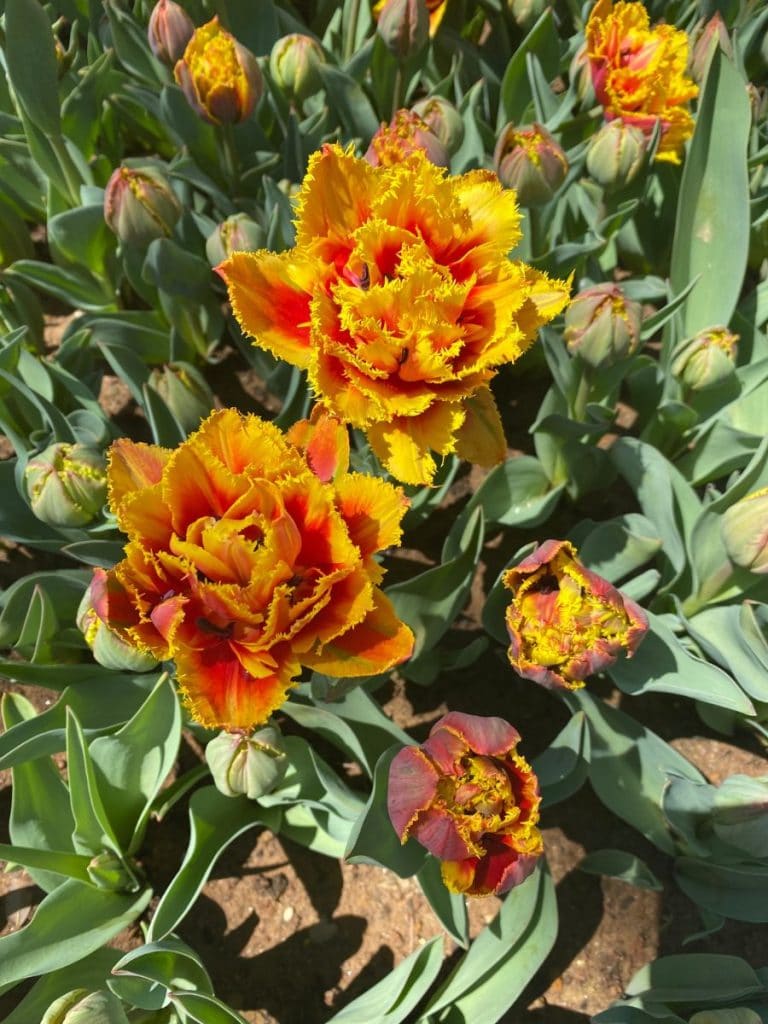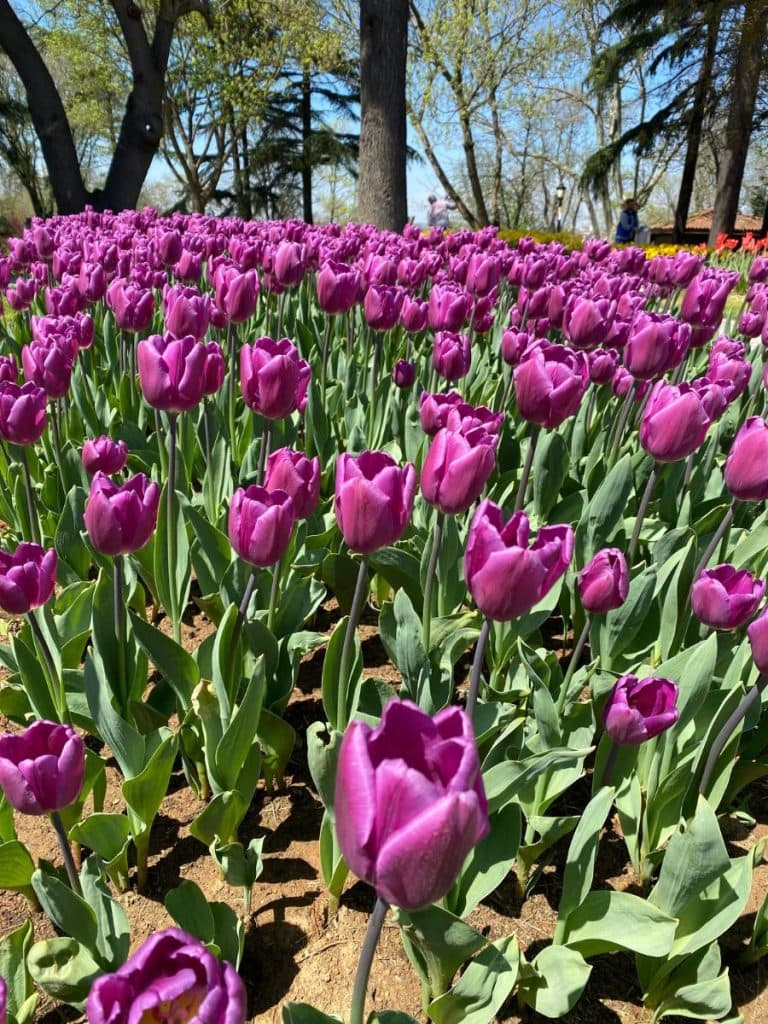National Flower of Turkey: The Stunning Tulip Its Power

The Art of Living in Turkey contains affiliate links and is a member of the Amazon Services LLC Associates Program. If you make a purchase using one of these Amazon links, I may receive compensation at no extra cost to you. See my Disclaimers for more information.
Did you ever do that project where you pick a country and create a report about its national emblems and population and other facts? I can’t for the life of me remember which country I did but I remember doing it.
As I learned about the national flower of Turkey, it made those memories of elementary school come flooding back. I did find this national emblem to be a surprise because I didn’t expect it.
The national flower of Turkey is the Tulip.
Many people are surprised to learn that this flower, often associated with the Netherlands, actually has deep roots in Turkish culture.
Originally cultivated in Central Asia, the tulip blossomed into a symbol of status and beauty during the Ottoman Empire in the 16th century. It adorned everything from paintings to pottery and became a proud emblem of Ottoman power and artistry.
In fact, it wasn’t until later that it made its way to Europe, sparking the famous “Tulip Mania” in the Netherlands. But I’ll explain later.
Living in Istanbul, I get to see my favorite flower fill the city each spring, and I love how it also appears year-round in logos, tourism, and countless other ways.
Let’s dive into why this iconic flower holds such cultural significance in Turkey, revealing the fascinating role it continues to play today.
The Tulip’s Cultural Role in Turkiye
Turkey’s national flower, the tulip, isn’t just another bloom. It’s a cultural icon, woven into the daily lives of Turks. Here are a few ways of how it adds color to the culture and traditions:
Symbol of Identity: The tulip serves as a symbol of national pride and identity.
Seeing it flourish during springtime revokes a sense of unity and belonging among the citizens. It is even the icon for Türkiey’s logo.

Folklore and Mythology: The tulip is a recurring theme in Turkish tales, painting a vivid picture of its cultural significance.
There are many variations of the legends about the perfect love between Farhad and Shirin. When she is murdered and in his grief as he rides his horse off a cliff, where his blood falls to the ground a tulip grows.
Festivals: Many local festivals and celebrations showcase this symbol of Turkey, further solidifying its cultural impact.
There is a tulip festival at gardens in both the European and Asian sides of Istanbul. The European one is at Emirgan Park and is quite extensive.
The one on the Asian side is in Goztepe and while not as extensive, its display is known to be a bit more extravagant. With such a significant cultural role, it transforms from a mere plant to a symbol of national pride and unity.
Who knew a simple bloom could have such an extensive impact?
Surprising History of the Tulip
This stunning flower is actually native to Central Asia and Turkey. While its cultivation probably started in current-day Iran in the 10th century, the Ottoman Empire quickly adopted it as a national symbol.
So how did they make their way to the Netherlands?
The Viennese ambassador, Augier Ghislain de Busbecq, was in Edirne in 1551 and saw the flowers in their full glory and was awestruck. The following year he sent some seeds to Austria.
A couple of decades later the French botanist Carolus Clusius started a botanic garden. One thing led to another and before you know it, tulips were getting stolen and a tulip trade was birthed.
In 1633 in the Netherlands a “frenzy” broke out and became known as “tulip mania”. They now also host a major festival every year.
a national Symbol in the Tourism Sector
Turkey’s national flower is not just a mere marvel of beauty. The tulip is also a significant symbol woven into the fabric of the country’s tourism sector.
Symbolizing Hospitality in Tourist Facilities
The tulip, an emblem of beauty and grace, often welcomes visitors to hotels, resorts, and restaurants.
It’s common to see it etched on decorative elements, printed on menus, or even woven as motifs in carpets, symbolizing Turkish hospitality at its finest.
Türkiye’s logo even boasts the tulip, taking pride in this stunning flower.

Promotion in Travel Literature
Various travel guides, brochures, and literature promoting Turkey’s picturesque views and rich culture often incorporate this distinctive flower.
Its image serves as a captivating visual reference, pulling potential visitors towards the alluring beauty of Turkey.
Attracting Flower Enthusiasts
Tourist agencies organize flower-spotting tours, targeting nature enthusiasts, photographers, painters, and anyone with a passion for flora.
These trips often promise rich encounters with colorful tulips in their natural habitat, adding another dimension to Turkey’s diverse tourist offerings.
A Floral Surprise
A couple of years ago I had the opportunity to check out the tulip festival at Emirgan Park. I was completely blown away.
We walked around for hours, had a picnic and I am sure we didn’t see it all.
There were so many different shades and displays and varieties. As we wandered the garden I couldn’t help but be struck by the beauty of a simple flower.
I am a creationist and not an evolutionist. In seeing these beautiful flowers it again confirms the creativity of a creator who didn’t put just one type of flower but so many. I left inspired to create myself!
The Flower’s Influence on Art and Crafts
This flower is not just confined to nature – it has also bloomed in the art and craft sector. Its allure has integrated itself within the country’s artistic expressions, making the flower a popular symbol in various artistic realms.
It is often referenced or directly portrayed in the country’s traditional and contemporary art pieces.
It is embedded in various art forms ranging from wall paintings, embroideries, and sculptures, to decorative ceramics.
Prolific in Pottery and Ceramics
Turkish pottery and ceramics are famous worldwide for their intricate, colorful designs.
Notably, it is a predominant motif in these artworks, adding depth and vibrant charm to these decorative and functional pieces.
Some of my favorite work is the hand-painting of tulips on ceramics in Cappadocia.
As we wandered in a pottery studio, we got to watch a man paint these tulips by hand and I found it fascinating and captivating as he created a work of art.
Impressions in Turkish Calligraphy
Even in the ancient Ottoman tradition of refined art with calligraphy and illumination – called “Tezhip,” the tulip makes an appearance.
“Illumination” is a technique where they ornament a piece of art with either gold leaf or paint.
It is often incorporated into the folds and curves of the elaborate designs, enhancing the rich visual language of this traditional art form.
The influence of the tulip in arts and crafts has a symbolic charm that is combined with its natural beauty, ensuring it remains a classic pattern in the nation’s artistic endeavors.
The textile and Fashion Industry
The tulip also holds a prestigious place within the country’s fashion and textile industry. Its iconic imagery continues to inspire a vast range of patterns and designs, making it an integral part of Turkey’s fashion identity.
It is such a classic element that it is seen in fashion trends starting in the Ottoman Empire through modern times.
Patterns in Traditional Textiles
In traditional textiles, the flower stands as an emblem of nationwide pride.
Craftspeople intricately wove its design into carpets, tablecloths, linens, and even the borders of traditional attires using various techniques such as embroidery, Jacquard weaving, and kilim.
A Trendsetter in Modern Fashion
In modern fashion, designers frequently incorporate the flower into their collections, projecting it as a symbol of unique style and elegance.
Be it in prints, embroidery, or accessories – the tulip continues to bloom, enhancing the beauty of Turkish fashion.
The Floral Impact on Accessories
Activity doesn’t stop with outfits.
The tulip’s design also decorates accessories like shoes, bags, and scarves, creating a unified floral theme that speaks loudly of Turkey’s love for its national flower.
The influence of the tulip in the textiles and fashion industry is profound, and it continues to reflect the country’s rich heritage while complementing its contemporary outlook.

Frequently Asked Questions about the National Emblems
What is the national animal of Turkey?
Turkey’s national animal is the gray wolf. It symbolizes strength, courage, and power.
How is the national flower depicted in Turkish culture?
This flower holds a dear place in Turkish folklore and traditions. It often serves as an emblem of various cultural narratives and has helped to shape the cultural landscape of Turkey.
How is the national flower used in Turkish art and fashion?
The national flower’s symbolism is deeply ingrained in Turkish art and fashion. It features prominently in artistic expressions, and its influences can be seen in the textile industry, inspiring a vast array of trendy designs.
Final Thoughts on Tulips
You can see how the tulip is not just a mere flower but a statement and emblem representing so much of who Turkey is. While many believe it to be rooted in Turkish folklore, much of that has been forgotten by many.
Yet still, this special bloom impacts so many industry sectors throughout Turkey as an ingrained part of the Turkish identity. From culture to tourism, art, and fashion, the flower of Turkey paints an enduring story.
It serves as a metaphorical thread, binding together the nation’s heritage, creativity, and entrepreneurial spirit.
As we witness its omnipresence across diverse sectors, we gain a deeper appreciation of the tulip, truly a symbol of the nation’s heart and soul.
Read more:
- Read more about the national animal of Turkey here
- Wondering how to say Turkey in Turkish?
- Just how big is Turkey actually?
- Wondering how men act in Turkey? Read on..
Turkey Vacation Basics
When I plan a trip these are the websites I use. I hope they help you plan your next adventure as well!
FLIGHTS: I am a huge fan of Skyscanner and WayAway.
VISAS: You can use the free e-visa portal here but for a few extra dollars you can use iVisa and someone else will handle any issues that may come up.
E-SIM: When I traveled to SE Asia I discovered e-sims and I’m never going back. Airalo has been easy and cheap!
TRAVEL INSURANCE: I use TravelInsurance.com for my trips abroad.
CAR RENTAL: I have loved working with Discover Cars when I rent cars in country.
AIRPORT TRANSFERS: I have used these transfers many times and they are always great. If you’d like more options, I also recommend GetTransfers.com as they allow you to compare companies.
ACCOMMODATION: Find the best Turkey hotel deals on Booking.com.
CITY TOURS & DAY TRIPS: You can browse GetYourGuide’s website to find just the tour you’re looking for! We also recommend the MegaPass for major cities.
